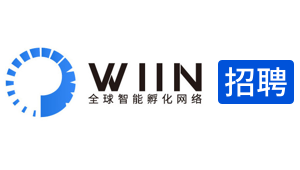The Global Innovation Index (GII) provides detailed metrics about the innovation performance of 126 countries which represent over 90% of the world’s population andover 96% of global GDP.
The index takes into account over 80 indicators that explore a broad vision of innovation, including R&D spending, political environment, education, infrastructure, policy implementation, and business sophistication.
In this quick read nihub shares the top five most innovative countries in the world and what they are bringing to the table in terms of technology, entrepreneurship, and innovation.
Switzerland has earned a solid reputation in fields of innovation and entrepreneurship. Between world-class research institutions and universities, top multinationals and correlated investments, and high profile green policy and innovation, Switzerland have created one of the world's most renowned innovation ecosystems.
Of course, as more and more Swiss startups, innovators, and entrepreneurs continuing investing and exploring larger markets abroad, this country of innovation is bound to spread their methodology and expertise into new markets, especially ones as robust and opportunistic as China.
The Netherlands has a strong, integrated business sector that works closely with universities. The country also gets high ratings when it comes to business sophistication. Dutch innovation leads the world in technological and creative outputs, especially in regard to patents in relation to logistics, information and communications tech, AI & big data, amongst other key verticals.
Even here at nihub, we’ve worked with the Dutch consulate and corresponding partners, innovation centers, and the like to help bridge Chinese opportunity with leading Dutch startups; including Dashmote which was amongst nihub’s capstone projects brought into the Chinese market during 2018.
Sweden ranks among the world’s top three most innovative countries every year – with a No.1 EU ranking in 2018 for the fourth consecutive year. The country also has the second highest R&D expenditure in Europe as a percentage of GDP, 40% higher than the OECD average. Sweden is also home to more than 100 testing and demonstration facilities with accompanying ecosystems of experts and financiers.
As if all that weren’t enough, Sweden also holds the world’s highest proportion of well-trained and top-industry researchers in the world. The current rate ofresearchers in Sweden represents nearly 1.5% of the country’s population.
Likewise, government funding for R&D has increased by 25% in the past decade, making all this research and innovation a national mandate. Finally, Sweden’s strongest factor is certainly its strong collaborative culture for innovation and entrepreneurship across industry, academia, and public sector verticals.
The United Kingdom is especially strong when it comes to the science & research indicators of GII's calculation. With their world-leading universities providing 60% more PhDs than the EU average and two and a half times the number of international scientific co-publications, the UK is home to an incredible amount of innovative and entrepreneurial minds.
Overall, their research system’s performance in 2017 was 80% better than the EU average. Put simply, UK universities include some of the best in Europe, and so can attract the best researchers and produce talented graduates that go on to continue innovating and transforming industries in the country.
Singapore's innovation ranking from GII comes as no surprise to anyone who's done business there. Business friendliness, low and transparent tax policy, and enough funding opportunity to make startups across the globe drool, Singapore offers a truly great ecosystem for their city-state's key industries and verticals.
More than being known for their business acumen, Singapore is also one of the leading countries to implement real and tangible innovation practices into their government as well.
Between a robotic police force, facial recognition ID implementation across offices and several sectors, and free skills training for all government employees, Singapore's mission to spread innovative thinking through its public service is truly one-of-a-kind.
When we look at the Chinese market, and particularly where it started from, this Global Innovation Index is put into an entirely new perspective. The first question to ask yourself is simple: What do these five countries have in common?
They're open. Singapore is renowned for favorable business conditions and known as a global business hub, while the majority of EU countries have established research, education, and government institutions that attract top talents from around the world.
When looking at China, as little as forty years ago foreign businesses wouldn't have dared (or have been allowed) to operate like they do today. Last year, merely decades after opening up markets to international trade and competition, China broke through into the top 20 of the GII at rank 17.
This is achieved solely through the assertive dedication by both Beijing as well as local and provincial governments to create unique and specific ecosystems, high-tech zones, and supportive policy to lift up entrepreneurial communities and allow them to thrive.







